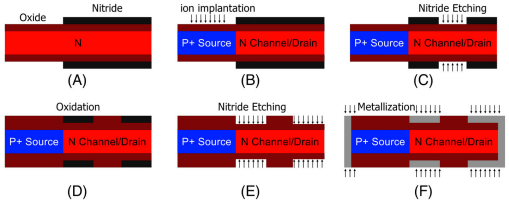Nano-electronic Simulation Software (NESS):
a flexible nano-device simulation platform
Salim Berrada, Hamilton Carrillo-Nunez, Jaehyun Lee, Cristina Medina-Bailon, Tapas Dutta, Oves Badami, Fikru Adamu-Lema, Vasanthan Thirunavukkarasu, Vihar Georgiev and Asen Asenov
Journal of Computational Electronics (2020)
DOI: 10.1007/s10825-020-01519-0
Abstract: The aim of this paper is to present a flexible and open-source multi-scale simulation software which has been developed by the Device Modelling Group at the University of Glasgow to study the charge transport in contemporary ultra-scaled Nano-CMOS devices. The name of this new simulation environment is Nano-electronic Simulation Software (NESS). Overall NESS is designed to be flexible, easy to use and extendable. Its main two modules are the structure generator and the numerical solvers module. The structure generator creates the geometry of the devices, defines the materials in each region of the simulation domain and includes eventually sources of statistical variability. The charge transport models and corresponding equations are implemented within the numerical solvers module and solved self-consistently with Poisson equation. Currently, NESS contains a drift–diffusion, Kubo–Greenwood, and non-equilibrium Green’s function (NEGF) solvers. The NEGF solver is the most important transport solver in the current version of NESS. Therefore, this paper is primarily focused on the description of the NEGF methodology and theory. It also provides comparison with the rest of the transport solvers implemented in NESS. The NEGF module in NESS can solve transport problems in the ballistic limit or including electron–phonon scattering. It also contains the Flietner model to compute the band-to-band tunneling current in heterostructures with a direct band gap. Both the structure generator and solvers are linked in NESS to supporting modules such as effective mass extractor and materials database. Simulation results are outputted in text or vtk format in order to be easily visualized and analyzed using 2D and 3D plots. The ultimate goal is for NESS to become open-source, flexible and easy to use TCAD simulation environment which can be used by researchers in both academia and industry and will facilitate collaborative software development.
FIG: Flowchart of NESS detailing its modular structure
NESS will be released in the summer of 2020 as an open-source software which makes it very interesting for both academia and industry in helping to address the challenges subsequent to the further down-scaling of CMOS components.
Acknowledgements: This work was supported by the European Union’s Horizon 2020 research and innovation programme under Grant Agreement No. 688101 SUPERAID7. Also, this project has received funding from EPSRC UKRI under Grant Agreements No. EP/S001131/1 (QSEE) and No. EP/P009972/1 (QUANTDEVMOD).


